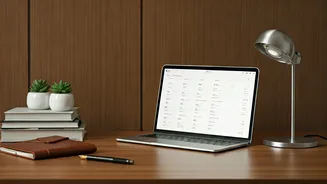The Importance of Alerts
Notifications serve as the primary means of communication in our digital world. They signal that something requires our attention, alerting us to new emails,
social media updates, news stories, or even critical system updates. Timely alerts are crucial for staying informed and responsive, whether it's catching up on essential information, responding to urgent requests, or simply being aware of the world around us. These alerts create a link between the sender and the receiver, ensuring information delivery. Without notifications, we'd have to constantly check each application or website manually to see if there's anything new. Efficient management of these notifications will allow us to stay connected and productive, while also minimizing distractions.
Notification Types Explored
Online notifications come in various forms, each serving a different purpose. Push notifications, delivered directly to your device, range from app updates to news alerts. Email notifications notify users of new emails, while social media alerts inform of new posts, comments, or messages. System notifications, often delivered by operating systems, deal with software updates, security warnings, and other system-related events. These notifications vary in importance, frequency, and delivery method, thus making it crucial to understand their nature and impact on your workflow. Some notifications may be time-sensitive, whilst others are less urgent. Understanding these notification types will enable you to tailor your notification setup to streamline your digital experience.
Customizing Your Settings
Effectively managing online notifications means personalizing your settings. Many platforms and devices allow users to customize how they receive notifications. This includes the ability to turn notifications on or off for different apps, to change the alert sounds or visual cues, and to manage the frequency and timing of notifications. You can also prioritize notifications, so the most essential alerts appear first, helping you manage your focus. Regularly reviewing your notification settings ensures they align with your needs. Turning off notifications for less important applications, or setting 'do not disturb' periods, can dramatically reduce distractions, allowing you to stay focused on the task. Customization allows you to create a personalized digital environment.
Staying Organized and Focused
Managing online notifications effectively is essential for maintaining productivity and focus. Constant interruptions from notifications can disrupt workflow and increase stress levels. To combat this, schedule specific times to check your notifications. Batching tasks and dealing with notifications together can reduce interruptions. Utilize features such as 'do not disturb' modes, especially during work or focused tasks. Keep only necessary notifications enabled to minimize distractions. Creating a balance between staying informed and minimizing interruptions is important. This may involve turning off non-essential notifications, grouping related alerts, and establishing a regular schedule for checking your various inboxes and feeds. Prioritizing notifications based on relevance and urgency is also crucial. Prioritizing tasks helps to reduce interruptions and maintain productivity.
Benefits of Efficient Management
Efficient notification management provides various benefits for users. Firstly, it enhances productivity by minimizing distractions and keeping individuals focused on their work. Secondly, it reduces stress caused by a constant stream of information. Thirdly, it improves decision-making by enabling quick access to important information. Efficient notification management can also lead to better digital well-being by reducing the feeling of being overwhelmed. Customizing notifications allows individuals to stay informed while staying in control of their digital experience. By implementing these practices, users can improve their focus, enhance productivity, and improve their online experience.











